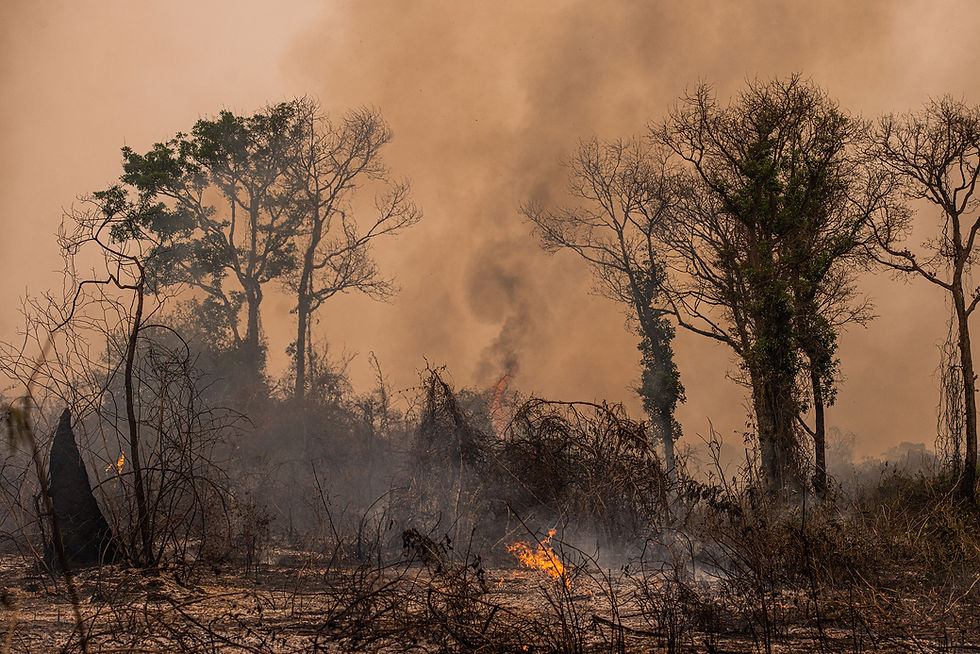How Does Wildfire Smoke Affect Your Indoor Air Quality and What You Can Do About It?
- Fresh Air Matters

- Aug 5, 2024
- 3 min read
In the midst of wildfire season, the air we breathe can be adversely impacted by the dangers of wildfire smoke. While we are often aware of the outdoor effects of wildfires, the consequences of these fires on indoor air quality are equally significant and can pose serious health risks. Understanding these implications is crucial, as it empowers us to take proactive steps to safeguard our indoor environments.
The Impact of Wildfire Smoke on Indoor Air Quality
Wildfire smoke contains a myriad of harmful pollutants, including volatile organic compounds (VOCs) and other impurities that can infiltrate our homes even when doors and windows are closed. These particles are so minuscule that they can easily sneak into our living spaces through tiny openings, ultimately compromising the air we breathe indoors.
As wildfire smoke lingers in the atmosphere, it can gradually seep into our homes, accumulating over time. This buildup leads to a decline in indoor air quality, exacerbating respiratory issues and other health concerns, particularly for children, the elderly, and individuals with pre-existing conditions.
Recognizing the Signs of Poor Indoor Air Quality
It's essential to be aware of the signs that indicate compromised indoor air quality due to wildfire smoke. Symptoms such as coughing, wheezing, shortness of breath, and watery eyes can manifest in individuals exposed to these pollutants indoors. Recognizing these signs is the first step in addressing the issue before it escalates.
Enhancing Indoor Air Quality: What Can You Do?
Air purifiers equipped with HEPA filters are highly effective in capturing tiny particles present in wildfire smoke. By running an air purifier in your home, you can significantly reduce the concentration of pollutants, ensuring cleaner and healthier indoor air.
2. Maintain Proper Ventilation
While it may seem counterintuitive, allowing fresh air to circulate within your home can help disperse indoor pollutants. When outdoor air quality improves, take the opportunity to ventilate your living spaces and replace stale air with cleaner air from outside.
3. Monitor Indoor Air Quality
Consider investing in an indoor air quality monitor to track the levels of particulate matter and other pollutants in your home. This device provides real-time data on air quality, enabling you to make informed decisions about when to adjust ventilation or run an air purifier.
4. Seal Gaps and Cracks
Prevent wildfire smoke from infiltrating your home by sealing gaps around windows, doors, and other openings where outdoor air can enter. This simple step can help minimize the entry of pollutants and maintain better indoor air quality.
Conclusion
As we navigate through wildfire season, it's crucial to prioritize the quality of the air inside our homes. By recognizing the impact of wildfire smoke on indoor air quality and taking proactive measures, we can create a safer and healthier environment for ourselves and our loved ones. Implementing these strategies can go a long way in mitigating the effects of wildfires on indoor air quality, ensuring that we breathe cleaner air even amidst environmental challenges.
Remember, safeguarding your indoor air quality is an investment in your well-being. Stay informed, stay prepared, and let's work together to keep our indoor environments healthy and fresh.
Stay safe, stay informed.
Considering the wealth of information provided, it's evident that being proactive in safeguarding indoor air quality during wildfire season is pivotal. Whether through the use of air purifiers, proper ventilation, or routine maintenance, taking steps to combat the infiltration of wildfire smoke can significantly enhance the air we breathe within our homes.
.png)





Comments